This is an image of Neptune, and shows the Great Dark Spot.
Click on image for full size
NASA
A Look at Neptune's Clouds
Like Jupiter and all the giant planets, Neptune's appearance shows a striped pattern of clouds. Other cloud shapes seen over time include a small dark spot, the "
scooter" and the Great Dark Spot. The
Great Dark Spot is the largest of the cloud patterns on Neptune. There are also clouds which are similar to recognizable
Earth clouds. The clouds are found low in the atmosphere of Neptune.
The atmosphere of Neptune is mostly made of a complex molecule called methane.
Hazes of smog on Neptune, made of methane and other, even more complex molecules, are to be found very high up, above the clouds of Neptune.
You might also be interested in:
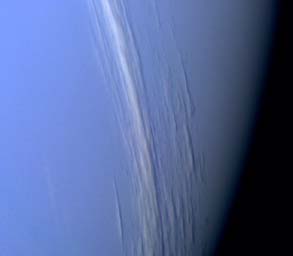
This image shows some clouds known as "cirrus" clouds, extending for many kilometers across the face of Neptune. These clouds are very high up, for they can be seen to cast shadows on the lower clouds,
...more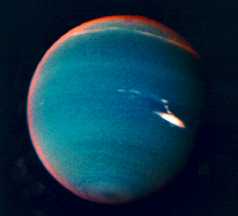
This image of Neptune uses false colors to show where the smog is. The smog of Neptune can be seen in red along the edge of the image. This smog haze is found very high up in the atmosphere, over the clouds
...more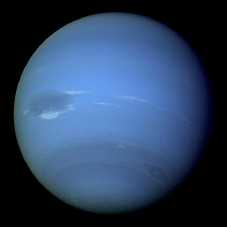
Neptune's atmosphere shows a striped pattern of clouds, just like that of Jupiter and Saturn. Neptune even has a Great Dark Spot similar to the Great Red Spot of Jupiter. The history of Neptune's atmosphere
...more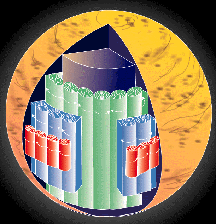
Motions in the interior of a gas-giant planet such as Neptune may be very different from the motions within the Earth. A second idea for the motions in the interior of a gas-giant planet is shown in this
...more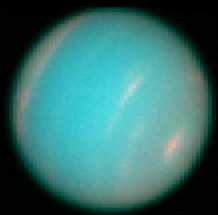
This image shows the new Great Dark Spot of Neptune, which was discovered using the Hubble Space Telescope. The image shown here, shows a large "hole" in the clouds of Neptune in pink, in the northern
...more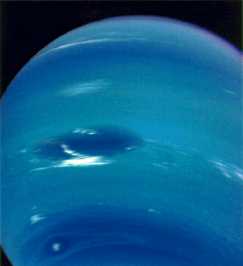
The giant planets have definitely changed since their formation. But how much remains to be seen. Most of the original air of the giant planets remains in place. (The earth-like planets lost most of their
...more
Like Jupiter and all the giant planets, Neptune's appearance shows a striped pattern of clouds. Other cloud shapes seen over time include a small dark spot, the "scooter" and the Great Dark Spot. The Great
...more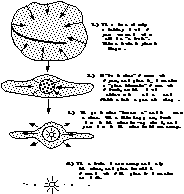
Scientists think that the solar system formed out of a spinning cloud of hydrogen and helium molecules. Because the cloud was spinning, it flattened into a frisbee shape, just like a ball of pizza dough
...more













